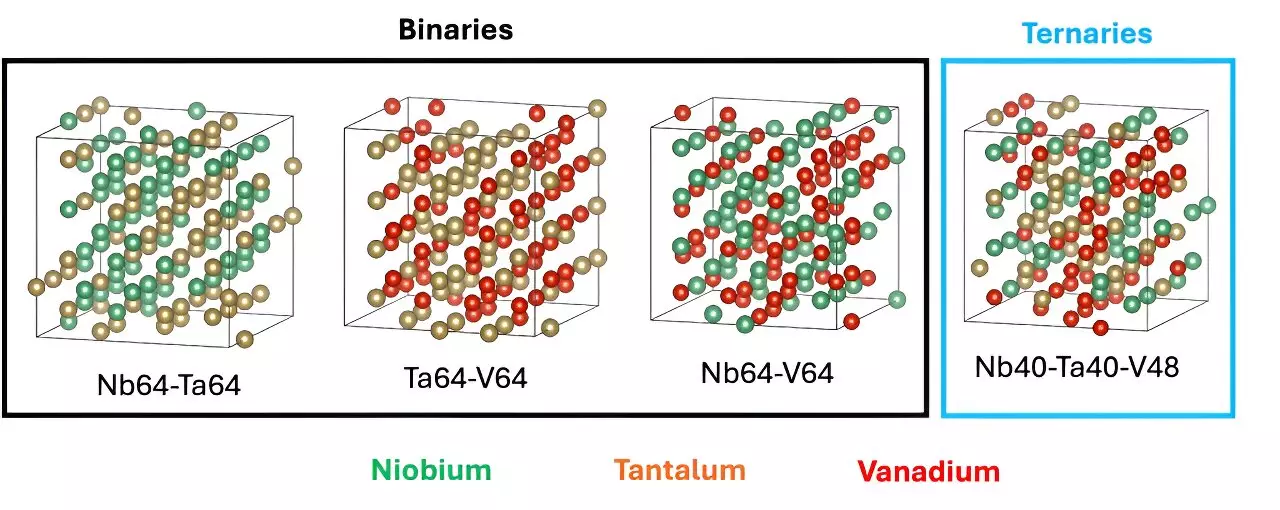The landscape of nuclear fusion technology is experiencing a transformative phase, with artificial intelligence (AI) at the forefront of these changes. Researchers at the Department of Energy’s Oak Ridge National Laboratory (ORNL) have developed an AI model capable of identifying novel alloy compositions for use as shielding materials in nuclear fusion reactors. This innovative project, initially inspired by former AI Initiative Director David Womble, signifies a leap toward enhancing the efficiency and safety of nuclear fusion facilities.
At the heart of this initiative is Massimiliano Lupo Pasini, an AI data scientist at ORNL, who has played a pivotal role in advancing the project under the AI for Scientific Discovery (AISD) thrust area. The results of this extensive research effort have been documented in the journal Scientific Data, emphasizing the significance of the findings. The ability to determine materials that can withstand extreme conditions is crucial for the successful operation of fusion reactors.
Lupo Pasini explains that these newly developed alloys must not only endure high temperatures but also possess mechanical properties that make them suitable for the complex environments of nuclear plants. Traditionally, tungsten-based alloys have dominated the field; however, these mixtures have proven inconsistent in providing adequate shielding, prompting researchers to explore alternative materials that can offer breakthrough performance.
The Challenges of Material Discovery
One of the primary obstacles faced by the research community in alloy creation is the sheer diversity of potential metallic combinations. With countless possibilities available, the traditional methods of trial and error can become prohibitively time-consuming and resource-intensive. This is where AI demonstrates its potential: by employing data-driven algorithms, researchers can expedite the discovery of viable alloy candidates more efficiently than ever before.
To achieve this, Lupo Pasini collaborated with fellow scientists, including German Samolyuk, Jong Youl Choi, Markus Eisenbach, Junqi Yin, and Ying Yang, forming a multidisciplinary team that harnessed significant computational power. Together, they amassed the necessary data to train the AI model, subsequently identifying promising elements to test as new alloy candidates. This collaboration highlights the importance of interdisciplinary approaches in tackling complex scientific challenges.
Although the initial AI-generated database is foundational, it only marks the beginning of the project. Future steps will involve refining and expanding the AI model used for materials discovery. Lupo Pasini points out that to effectively design new high-entropy alloys, the AI model must consider six elemental components. Additionally, conducting quantum mechanical calculations, which are demanding in terms of computational resources, adds another layer of complexity to the research process.
Lupo Pasini notes that the creation of the data underpinning their model involved extensive calculations on advanced supercomputers, specifically the Perlmutter and Summit systems. These powerful computing facilities, operated by the DOE Office of Science, were instrumental in generating the data required for the artificial intelligence framework. The entire data generation process spanned more than a year, underscoring the prolonged commitment to overcoming the computational hurdles inherent in materials science.
The team’s next phase revolves around harnessing the generated data to enhance the AI model, facilitating the exploration of various alloy compositions and their potential impacts on fusion technology. By assisting material scientists in accurately determining the optimal ratios of different elements, this research aspires to accelerate the discovery of innovative alloys capable of driving significant technological advancements in nuclear fusion.
As the quest for sustainable and efficient energy solutions persists, initiatives that utilize artificial intelligence to revolutionize material science will undoubtedly play a critical role in shaping the future. The collaboration between computational science and material discovery not only exemplifies the innovative spirit of researchers at ORNL but also offers vital insights into the path forward for nuclear fusion technology.
The marriage of AI and material science represents a promising frontier for advancements in fusion energy and beyond. With ongoing research and collaboration, the potential for groundbreaking alloys may soon lead to more resilient and efficient nuclear fusion reactors, paving the way for a sustainable energy future.

